Hyundai – so… how do you like them now?
- Written by David Taylor
- Published in News
- font size decrease font size increase font size
- Be the first to comment!
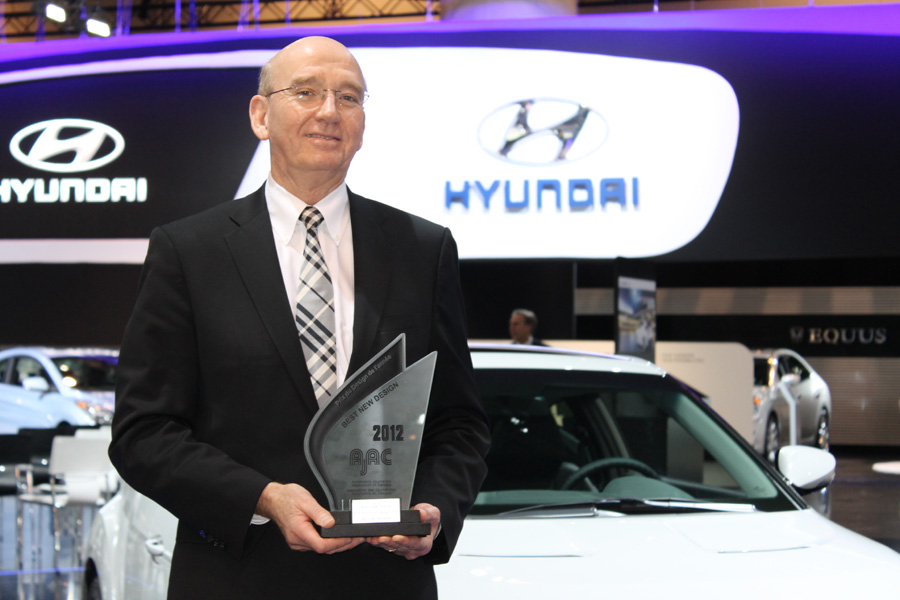
You can be sure that February 16, 2012 is a date that will long resonate in the hallways of Hyundai around the world – but especially here in Canada.
It was that morning when Richard Russell, Chair of the Automobile Journalists Association of Canada (AJAC) opened an envelope and declared the 2012 Hyundai Elantra had been awarded AJAC's Car of the Year.
Just a few moments before, a room full of media from across North America exploded when Steve Kelleher, President and CEO, Hyundai Auto Canada Corp. made the short walk to the podium to accept the "Best New Design" award for 2012 for the new and innovative Hyundai Veloster.
For Hyundai, this morning was, indeed a moment to savour.
Earlier this year at the Detroit Auto Show on January 9, the Elantra was selected as the North American Car of the year for 2012.
A double honour; one that many had been quietly debating around water coolers and in the shadows for some weeks.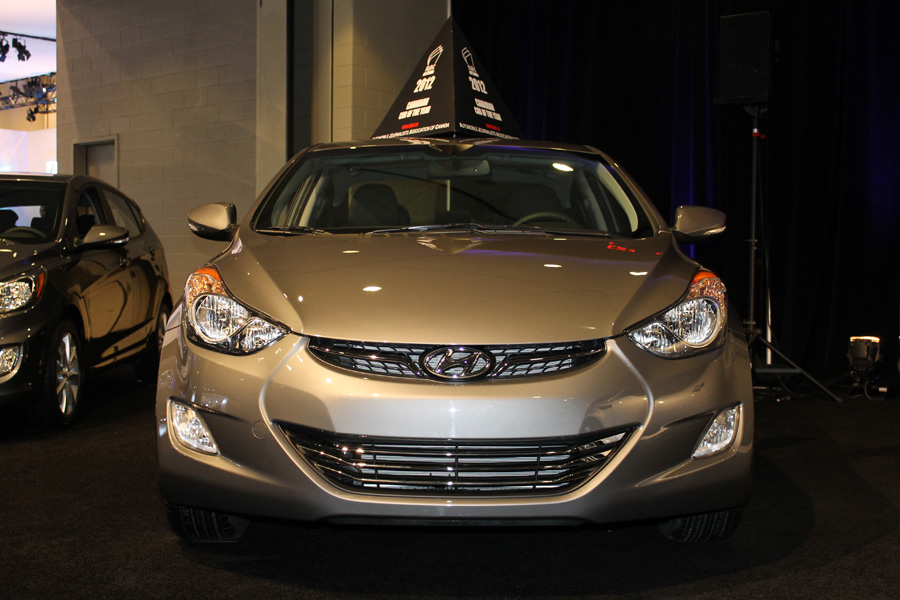
Validation for the Korean-based manufacturer who has slowly convinced many auto journalists and aficionados over recent years that their engineering, value proposition and fluidic styling were the real deal. In fact, back at the beginning of 2009 those two exact same awards were bestowed upon Hyundai's rear-wheel drive sports coupe, the Genesis. What made this award all the more special was that the three finalists for this honour were all Korean manufacturers. Hyundai with the Accent and the Elantra and sister company, Kia, the upstart, new kids on the block, with the Optima.
No longer would Hyundai be considered a one trick pony – pun completely intended.
Now, the general public will have to pay attention to another Asian manufacturer of well-engineered, value-laden and stylish modes of transport for practically every budget.
Later the same morning, I was able to sit down with the affable Mr. Kelleher for a quiet, far-reaching and informative one-on-one interview as he and his staff slowly began to realize the enormity of their accomplishment.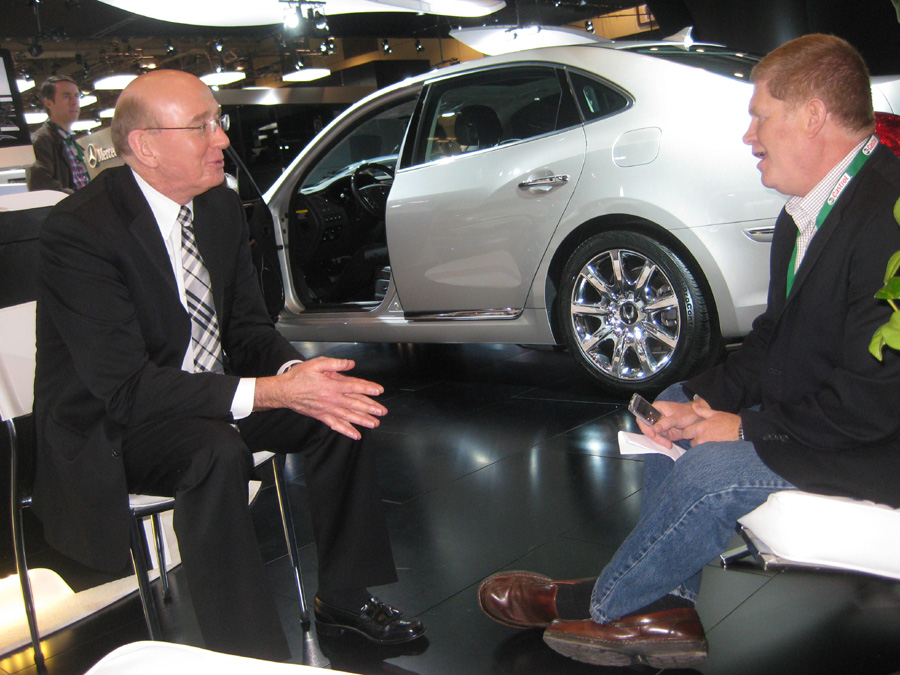
TDM: Congratulations on this win. Feel any different today than you did yesterday?
SK: Thank you. I have to admit that it was all a bit nerve wracking early on. While we did have finalists for two of the three cars, there was always the thought what if we split the vote? Even with the Veloster's win earlier, we were still unsure.
TDM: Now do you believe that consumers will afford Hyundai the respect that you deserve? Do you see a pay off now for the value proposition – that and the fact that you may now be more than just a rational purchase?
SK: We're not about bragging rights. We do what we do very well and have been consistent in our styling, engineering and value-proposition for some time. It's true that in the early years, we struggled. No question. But we stayed our course and made it through. 2011 was where many things went very well for us as a manufacturer and a marketer. From a consumer point of view, in the past, we would be perceived as a rational purchase – the price was right. But now, we offer a complete package. It's not multiple choice. Now a car buyer will look at the design, the technology, the performance, the mileage – and, of course price and is more likely to want to buy us! Becoming an emotional purchase? That's a change for us that while slow in coming, has built in momentum. We need to maintain that and build upon it.
You know, Japan has been looking at us for a few years now – as has Detroit. We believe that Japanese manufacturers will work very hard to regain any lost market share from 2011 as a result of the earthquake and tsunami in Japan and later flooding in Thailand.
We respect our competition. All of it. It makes us stronger and hopefully better. We expect that Honda, for example, will do what they do best with their marketing and product, and will likely regain some of the market share they lost in 2011. Our goal is to build upon our successes.
TDM: The Elantra saw an overall increase in sales across Canada of 30.1%, representing 44,970 vehicles. This January, Hyundai sold 7,460 vehicles, an 11.6% increase over last year. Where do you believe your sustained growth is coming from?
SK: It's a well-known fact that sales in Quebec and Eastern Canada for our various models have, until last year been the heart of our combined efforts in Canada. It's practically been that way since 1984, our first full year in Canada. Ontario consumers have been rewarding us over these last few years with significant increased purchases. Approximately 20% each year. In fact, in Canada we are fortunate to have enjoyed 37 consecutive months of year-over-year sales growth. It is our belief that going forward, we will likely not lose ground as far as market share goes. But we are not going to rest on our laurels and expect results.
Going forward, we need to continue to offer our loyal customers the innovation, styling and pricing they have come to expect. This morning, we unveiled a 2-door coupe of the Elantra; later this year, an exciting all new Santa Fe will be rolled out.
TDM: So, complacency is not about to set in any time soon?
SK: (smiling) Let's hope not! We're serious about who we are and what we can do. As a global corporation we're proud and pleased to be in the position we are today. But we keep thinking "what have we done lately?" Just a few days ago I was in Korea for a series of meetings with head office. I also spent time in our design facility. The Namyang R&D Centre located in Hwaseong, Gyeonggi (about one hour south of Seoul) is a world-class technology research centre. Hyundai now employs approximately 10,000 engineers, designers and researchers here working around the clock to create and develop the best automobiles in performance, quality, and eco-friendliness. A year ago, it was around 8,000.
TDM: Since Hyundai came to Canada, you made it clear that value-pricing and innovation was going to be your calling card. The Pony arrived with three price points: $3,999; $4,999; and, $5,999 – almost take it or leave it. Should what you are accomplishing today in Canada and many other major markets come as a surprise?
SK: Yes, the Pony! It's true; we made no secret of our planned intent from day one. In many ways, we took what many of our Japanese friends were already doing and stayed pretty much on message.
TDM: How does Hyundai consistently package great styling, quality and technology for such a great price?
SK: Obviously, we have been true to our intent. We work hard as a corporation to keep manufacturing costs as low as we can. We have the added advantage of producing our own steel in Korea in our own plants. Hyundai is a global entity with a great deal of vertical integration. Stepping back, consider the message – some would say commitment – from our Chairman Mong-Koo Chung. He stated that in 2011 Hyundai Motor Company would launch a campaign to ensure the energy for growth with a new slogan: "New thinking. New Possibilities."
TDM: Meaning?
SK: Simply, new ideas create new values. Hyundai will respond to the fast-changing international management environment by constructing a system for organic cooperation between production factory and sales headquarters in each country worldwide.
TDM: So there is buy-in around the world – including Canada?
SK: Yes. Absolutely. Our corporate team and dealer network has been working harder to prioritize our customers and also the talent in all departments. It's important we remain competitive. We will continue to do so through exceptional and even fundamental technologies; with environmental management and by continuously expanding our overall R&D and investment in eco-friendly vehicles. Hyundai Motor Company will work hard to provide this new value to yet more customers.
We call it our modern premium concept. We need to give our customers the best car per dollar. What it means is that we put the features in the vehicle that people really want and need. Features in a compact car that are unheard of. Heated rear seats in the Elantra for example. We look at our competition. Very closely. We also noticed that some manufacturers were losing some of the quality on the interior. We made it clear internally; there could be no compromise. No damage to the integrity of the brand.
TDM: In a relatively short space of time, Hyundai has turned the industry on its ear. Now you have a line up of vehicles that can cater to almost any budget. Starting with the Accent and all the way to your super-premium Equus – the flagship marque. Is being all things to all people a misstep?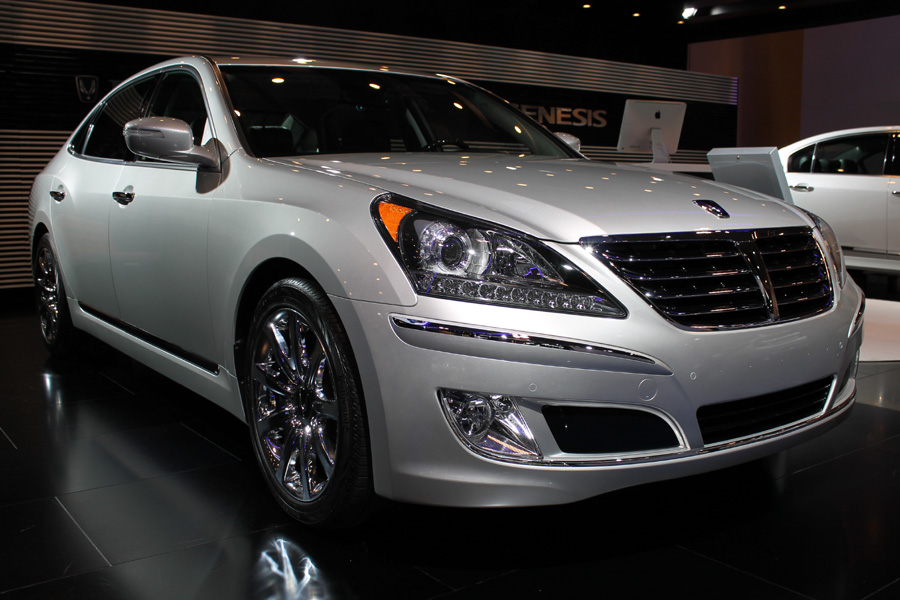
SK: It's tough to sell both. Each buyer's wants and needs are so different. Two things: Equus and Genesis as a halo have done a lot for us as a manufacturer. I think they're brand builders. It adds credibility. But is it the right move? Maybe… perhaps. Let's look at Toyota for example and their Avalon. Similar situation to ours. Do they sell many? No, not really. But it does sell and it does not seem to affect their brand – overall.
TDM: OK then, so why create an Equus… a Genesis? Because you can?
SK: (laughs) Well, there is truth in that. But regardless, at this stage, if we do bring product to market, even with limited production, it must still be designed and built with our core principals in mind.
TDM: Where do you see the industry going long-term?
SK: Long term? This year? Next year? Five years from now?
TDM: Do you see more hybrids, for example?
SK: There'll be variations. They may not sell well. But they will be there. We need to produce them for many reasons, optics included. However, technological innovations for the internal combustion engine will continue. Remember our engineers were the first to bring out gasoline-injection. Everything you can do to increase efficiencies will continue to be developed. We mentioned our steel plant before. We're now producing lighter, much stronger steel than before. This year? The light truck market will continue to do well, but will probably slowly decline – unless gas prices go really high. Probably flat, over 2011. Perhaps a 2 – 3% increase across the board…
TDM: Does Canada have much influence in Korea as far as product development is concerned?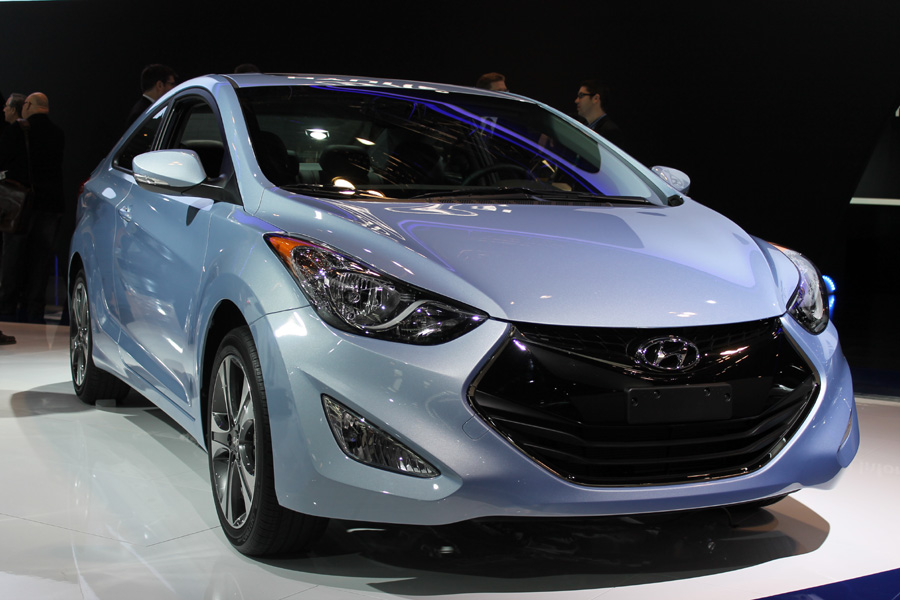
SK: Well, the Elantra for North America has heated rear seats. Not available elsewhere. Canada does have influence, definitely. From the get go, Canadian input from this cold weather climate market was important. We even set up a cold weather test facility here.
Getting back to your earlier question; I also believe that there will be greater innovation in 4-cylinder engines – from everyone – and especially ourselves. Turbo-charge technology will continue to be developed to bring performance and economy to the fore. Wait until the all new Santa Fe comes out…
TDM: Yes…?
SK: (grinning) That's about all I'm allowed to say right now! But it is something. You'll see soon enough!
TDM: Are there similarities to the car market in Korea compared to Canada?
SK: The fundamental difference is that larger cars are the norm; just like in Japan. OK, so that's a generalization. The car market in Korean is pretty much the same size in Canada. But look around the roads for Hyundais and you'll see more Genesis, Equus and of course Sonata than you will our own compact and sub-compact cars.
TDM: Now that's a trend you'd like to emulate here.
SK: Yes, but as long as we can sell and make competitive automobiles for any market, that's our job.
TDM: Thank you.
